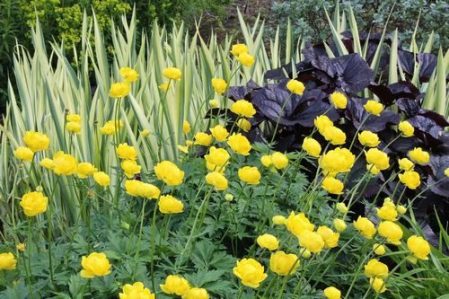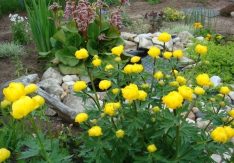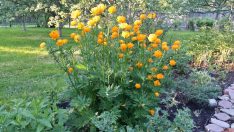The leotard from the family Ranunculaceae is a herbaceous perennial, which in early summer is replete with yellow-orange dyes in green meadows with lush grass. An ornamental plant that does not require special care, the simplicity of its character has won the love of many gardeners who want to decorate the garden with lushly flowering cultures of luminiferous colors.
Material Content:
Leotard: types, varieties and description
A herbaceous plant is formed in stages. In the first year, a leaf rosette with a height of up to 40 cm is formed, from which in the next season weakly leafy flower stalks develop, crowned with double yellow flowers. With each year of development, the number of elegant peduncles increases. Flowering lasts about a month and is observed in the first half of summer. And carved sheet plates painted in bright shades of green do not lose their decorativeness throughout the growing season of the culture. Although for a long time, traditional healers used a swimsuit in the preparation of various decoctions, the florist should remember that the plant is poisonous.

In the wild, the genus is represented by more than 20 species, of which some became the basis for the cultivation of varieties and hybrids for the garden:
- European swimsuit - the species is widely represented in the regions of the Non-Chernozem region, where it is found in unabated forests of a mixed type, as well as on the edges and meadows. Spherical yellow flowers delight with their sunshine in early summer.Common varieties that are often grown in the culture: lemon Canary Bird, golden Earliest of Al, medium-tall Orange Princess of yellow-orange color and tall variety Superbus, capable of exceeding a meter height.
- The highest leotard is a view up to one and a half meters high with milky inflorescences-balls, which lives among tall grass.
- Large-petalled leotard - a species native to the Primorsky Territory with open orange-colored inflorescences.
- An Asian leotard - a species often found in culture, is represented by plants up to 80 cm high with bright orange spherical flowers. In the wild, it grows not only in forest zones on the plains, but also in the alpine zone of the Ural Mountains.
- The Dzhungar swimming pool is a stunted species with a height that in nature does not exceed 15 cm, and with proper care in the garden, can be 45 cm. The name of the variety is due to the natural habitat of growth - the Dzungarian mountains. The flowering phase, in which the flowers characteristic of the genus bloom, falls at the beginning of summer.
- Chinese leotard - a species of interest to breeders with a later flowering period in the second half of summer. At this time, raw edges are covered with orange caps of wild flowers.
- The lilac swimsuit is a wild-growing form, which, due to growth in high mountain regions, is practically unable to take root in gardens. However, the species deserves attention due to its rare color, uncharacteristic for the inflorescences of the leotard.
- Ledebur's trollius is a tall species up to one and a half meters in height with medium-sized orange flowers.
- Altai bathhouse - a species that has much in common with the Asian bathhouse, differs only in a dark spot of twisted stigmas in the center of an orange inflorescence.
Possible difficulties when growing
When growing a strong plant with good immunity, problems are extremely rare.
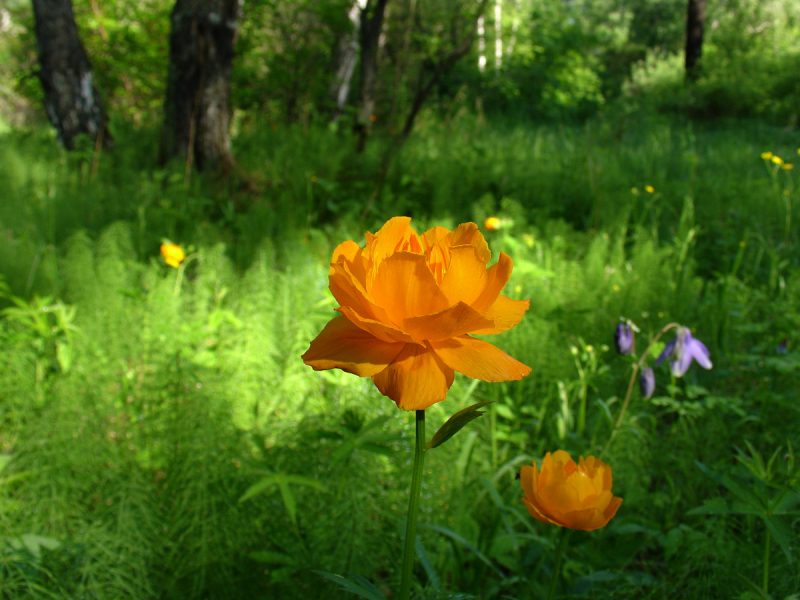
However, under adverse weather conditions and contaminated soil, the following diseases may develop:
- Septoria - a fungal disease develops on leaf blades and, if untreated, can cause the death of the entire plant.
- Smut - a disease leads to blackening of the stem or its transformation into dust.
In the case of the manifestation of diseases, it is necessary to stop their development with the help of a fungicidal preparation and remove the affected parts of the shoots. In the fall, before preparing for winter, all plant debris is necessarily removed.
Planting a leotard in open ground
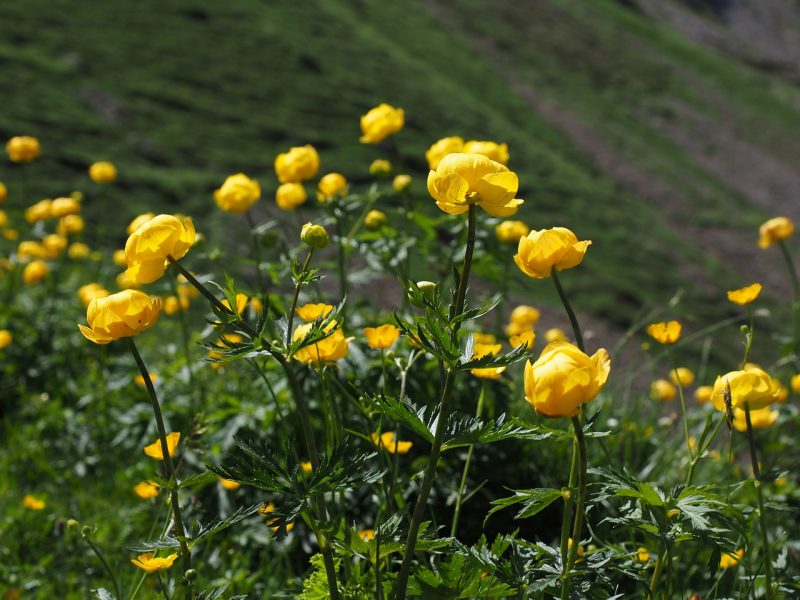
In order for the plant to fully develop and delight with its lush flowering for many years, it is necessary to correctly plant the leotard.
Site selection and soil preparation
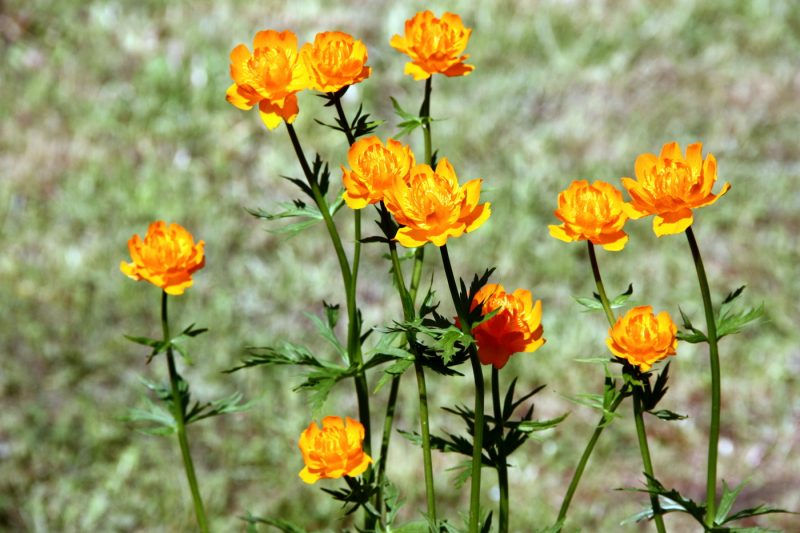
When choosing a place, it should be remembered that the open sun makes flowers smaller and paler, and a deficit of light affects the growth rate. Therefore, the best option would be a shaded area with access to bright, soft light. The soil should be fertile, loose and moist with close occurrence of groundwater.
Landing rules
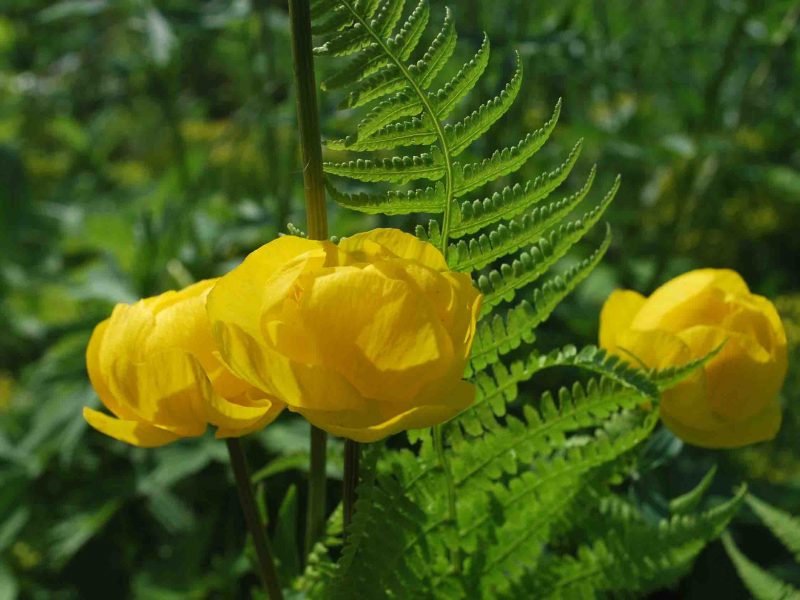
The main landing rules that should be taken into account during the work are as follows:
- Timing - the best time for planting seedlings is the end of August, since early frosts can return frosts.
- The distance between the holes - the holes are dug at a distance of 40 cm from each other.
- Nutrient substrate - the holes are filled with a soil mixture from the extracted earth and peat.
Leotard: garden care
After planting a leotard in open ground care for an extraordinary and very decorative flower practically does not take time from the grower.
Watering

The main requirement for cultivating a leotard in the garden is to maintain a constant soil moisture under the plantings. At the same time, watering should not be carried out until the top layer of soil is slightly shaken.
Weeding and cultivation
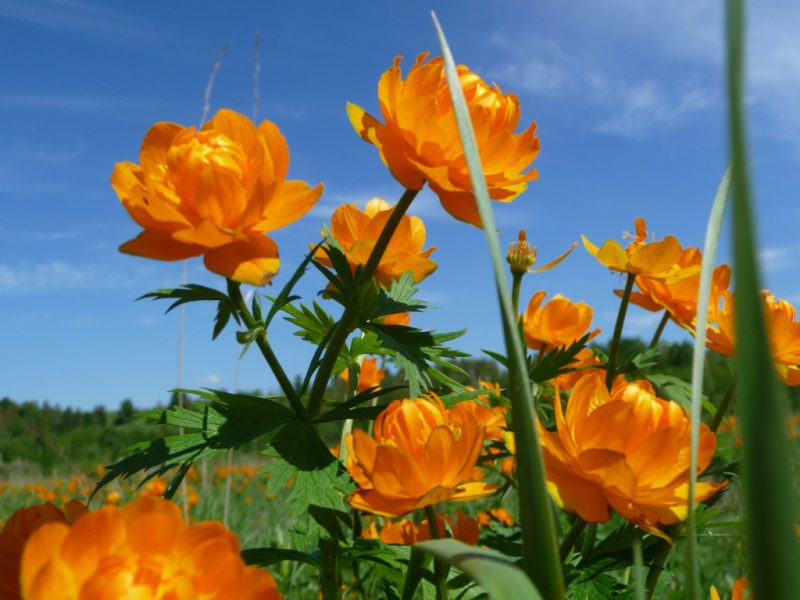
During the growing season, flowers should be weeded at a distance of 10 cm from the central shoot about two to three times, depending on the growth rate of weed vegetation. To maintain the loose structure of the soil several times during the summer, shallow cultivation is carried out, which contributes to the free access of water and air to the roots.
Top dressing
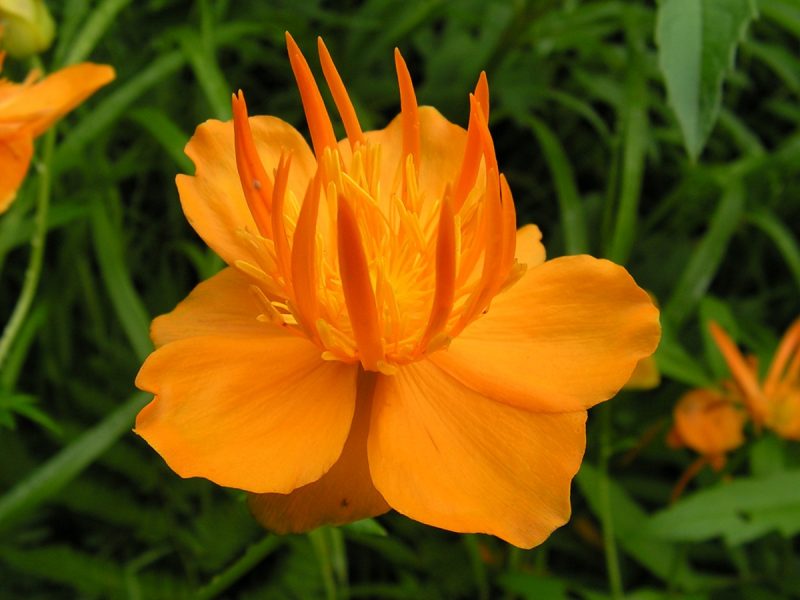
Plants are provided with additional nutrition twice during the growing season:
- In April, the leotard is fed with nitrogen fertilizers, which stimulate the growth of green mass.
- In the phase of budding, a phosphorus-potassium complex is introduced under the plants, which gives the culture the necessary macroelements for abundant and long flowering.
Important! Timely dressing allows you to get lush and bright inflorescences.
Methods of reproduction
The leotard is a perennial flower, so it can be propagated in two ways: vegetative and seed.
Seed way
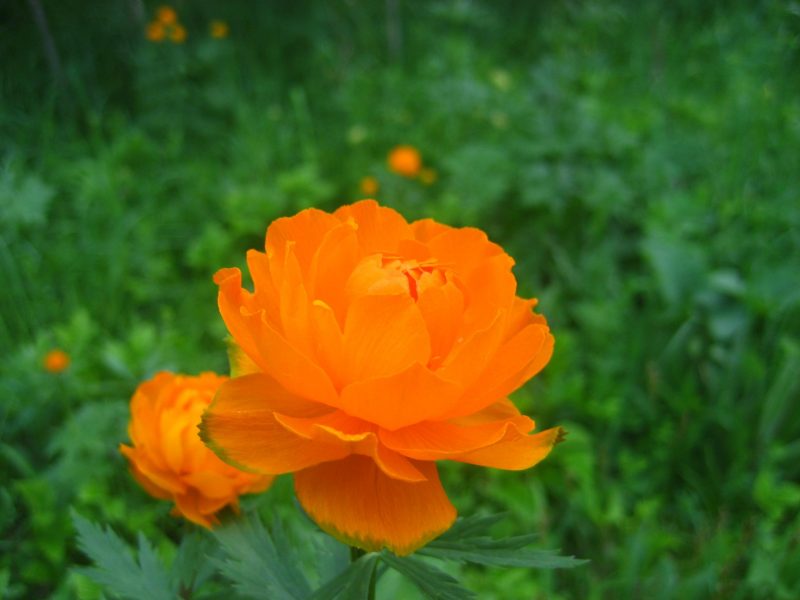
With seed propagation:
- freshly harvested seeds are sown in the fall in the ground, where they undergo a natural stratification;
- after the snow cover has melted and the soil has warmed up, seedlings begin to appear that require constant moisture.
The seeds of some varieties of a leotard must be sown in the spring to obtain normal seedlings.
Before that:
- Sowing material in autumn is placed in a soil mixture of peat, sand, moss and perlite in equal parts.
- The container goes to a dark, cool place with a temperature of 4-5 ° C.
- After the snow melts, the seeds are sown in the garden.
Bush division
The procedure can be carried out both before flowering in the spring, and in early autumn, so that the plants have time to take root.
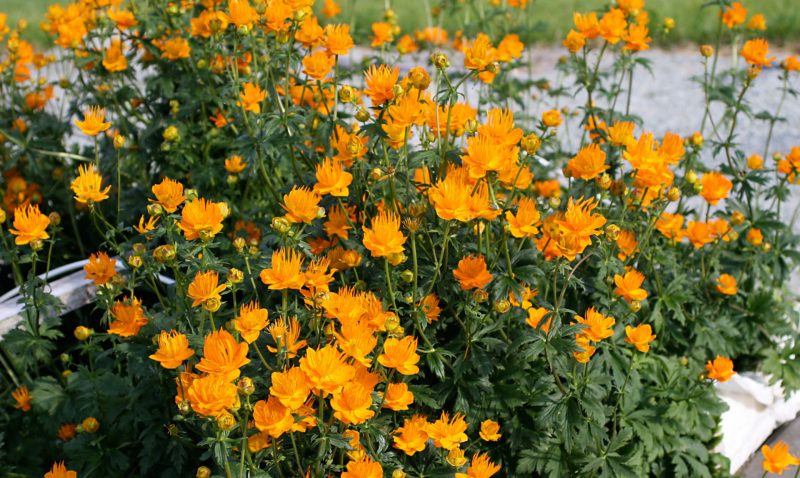
During the procedure:
- Rhizome along with shoots is extracted from the ground.
- With a sharp knife, the bush is divided into several parts, each of which should have at least 3 buds.
- Delenki without shaking from the remains of the roots and soil are planted at permanent places of growth.
- Plantings before the onset of cold weather are moistened and covered with a layer of mulch.
- Next spring, new specimens will have up to seven peduncles and will bloom.
Use in landscape design
The unpretentious plant is used in landscape design to decorate various art objects:
- undersized species and varieties feel great on stony alpine slides from the shady side;
- hygrophilous and vibrant plants, ideally combined with ferns, forget-me-nots and irises, decorate the shady areas of the garden, where other crops poorly develop due to constant soil moisture;
- decorative flowers are often found near artificial reservoirs that adorn household plots and garden and park ensembles;
- swimsuits with lush inflorescences will not be superfluous on the flower beds, in discounts and mixborders.
Thus, the unpretentious representative of buttercups will be an excellent addition to the garden and will bring even rays of light to the shady zones, giving vigor and a sea of positive emotions.


